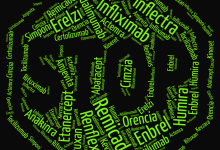Time to Listen Save

In 1927, FW Peabody wrote a landmark essay, “The Care of the Patient”. Peabody writes about the limitations of training and technology and how the care of the patient involves the most humanistic qualities. Peabody wrote:
“The treatment of a disease may be entirely impersonal; the care of a patient must be completely personal. The significance of the intimate personal relationship between physician and patient cannot be too strongly emphasized, for in an extraordinarily large number of cases both diagnosis and treatment are directly dependent on it, and the failure of the young physician to establish this relationship accounts for much of his ineffectiveness in the care of patients....”
Maybe the two hardest parts of modern medicine are time and listening. Both are connected, and giving either may be the most humanistic and caring thing a physician can do.
Listen. Great things happen when you listen: you can learn, analyze, study, understand and be labeled a good friend, listener, compassionate or even caring physician. Discovering a drug’s efficacy or safety requires listening. There are fake listeners who are out to chill, snooze, tune-out; but let’s assume those types don’t have a place in medicine and should not exist.
- Your best learning comes when you listen and ask questions.
- Remember you were given two ears and one mouth. To me (an over-talker) this doesn’t hold up too well. Does having two nostrils mean I should smell more than talk?
- Listening is a skill, a great luxury and an integral part of medical interviewing.
Time. There is a shortage of time for most physicians. It’s a struggle to balance the demands of medicine and time for one’s self or family. Most rheumatologists work through lunch or eat fruit, Fritos or power bars between patients.
Some patients want and need to be heard. Others are content with letting you pry the details from them as they fearfully or stoically hold their info cards close to the vest. The problem is, patients don’t wear the badge that distinguishes the monosyllabic responder from the rambling fountain of misinformation. And you may have to find this out during the limited time you have together.
I did a survey in 2008 of 446 US rheumatologists and found that the average follow-up rheumatology visit is 21 minutes. Below is my time accounting of a typical 21-minute medical visit (being as time-stingy as possible):
o 1.5 minutes – Review of current active meds or changes
o 1.5 minutes – Update medical history or problem list
o 5 minutes - Charting on EMR, writing or dictating notes
o 1.5 minutes - Entering, exiting, instructions and greetings
o 1.5 minutes - Review of patient follow up survey (includes pain, global, HAQ scores, ROS or symptom review)
o 3 minutes - 99214 level clinical exam, including the 28 joint exam
o 1 minutes - Billing, coding
o 3 minutes - Prescriptions & refills
o Total = 18 minutes. That leaves roughly 3 minutes for everything else – including listening and counseling. This time is also usurped by specific questions about the patient's complaints or issues, the need quantify measures AM stiffness, sleep, rashes, respond to specific requests (jury duty or return to work letters, complaints about parking or the dog smell in the lobby). God forbid further time is spent discussing TV medical advertisements, insurance forms, drug preapproval or the need for an injection. Even better, the accompanying spouse who would like to show you a rash….
Unstructured, unlimited listening a time killer. Time is on an austerity budget in everyone’s clinic. Time is not just money, it’s a race to getting it right in the shortest, cleanest manner. Patients may not know what they don’t know, and you have become their partner if deciphering that which is important.
My Suggested Solutions on Time Management (AKA how to be a better listener).
- Teach patients what is important in their follow- up visits. I let my patients know that I need to review, update and be 100% accurate about ALL their medications (including vitamins, nutraceutical, magic potions). I tell them that at every visit, I will ask and need them to fill out my “Follow-Up Questionnaire Survey” about their: pain level, sleep quality, etc.
- Use a structured survey form that patients can fill out while in the waiting room. Dr. Ted Pincus has a great one that many practices use. RheumNow has posted my form for download (here); this includes a pain score, global assessment, ROS, new problems, new meds or changes, self-examination, info on refills, upcoming visits/tests and a modified HAQ. Anyone participating in a network or registry like CORRONA have similar forms. Collecting such information saves time, allows for higher levels of billing, and allows the patient to talk of his/her concerns while you collect the information you need.
- Allocate important tasks to the front desk (patient forms), medical assistants (review of medications, refill requests, vitals), or record keeping (scribes).
- Don’t hesitate to bring the patient back for additional tasks or efforts that can be done later (i.e., joint injections, family counseling, disability determinations). Remember: some patients want and need to be heard, while others are content with letting you discover the details.
- Use, but limit, patient portals for communications and questions.
How do you manage to be a listener and how do you maximize your patient time in clinic? Do you have suggestions to improve time management in the clinic?
Peabody FW. The care of the patient. JAMA. 2015 May 12;313(18):1868.










If you are a health practitioner, you may Login/Register to comment.
Due to the nature of these comment forums, only health practitioners are allowed to comment at this time.